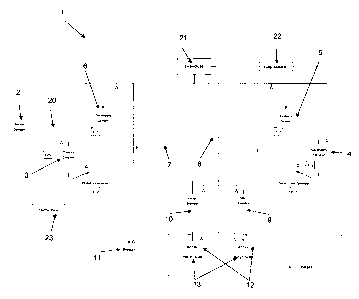Une partie des informations de ce site Web a été fournie par des sources externes. Le gouvernement du Canada n'assume aucune responsabilité concernant la précision, l'actualité ou la fiabilité des informations fournies par les sources externes. Les utilisateurs qui désirent employer cette information devraient consulter directement la source des informations. Le contenu fourni par les sources externes n'est pas assujetti aux exigences sur les langues officielles, la protection des renseignements personnels et l'accessibilité.
L'apparition de différences dans le texte et l'image des Revendications et de l'Abrégé dépend du moment auquel le document est publié. Les textes des Revendications et de l'Abrégé sont affichés :
| (12) Demande de brevet: | (11) CA 2702597 |
|---|---|
| (54) Titre français: | SYSTEME ET PROCEDE DE BROYAGE ET DE MELANGE |
| (54) Titre anglais: | CRUSHING AND BLENDING SYSTEM AND METHOD |
| Statut: | Réputée abandonnée et au-delà du délai pour le rétablissement - en attente de la réponse à l’avis de communication rejetée |
| (51) Classification internationale des brevets (CIB): |
|
|---|---|
| (72) Inventeurs : |
|
| (73) Titulaires : |
|
| (71) Demandeurs : |
|
| (74) Agent: | LAVERY, DE BILLY, LLP |
| (74) Co-agent: | |
| (45) Délivré: | |
| (22) Date de dépôt: | 2010-05-04 |
| (41) Mise à la disponibilité du public: | 2011-11-04 |
| Licence disponible: | S.O. |
| Cédé au domaine public: | S.O. |
| (25) Langue des documents déposés: | Anglais |
| Traité de coopération en matière de brevets (PCT): | Non |
|---|
| (30) Données de priorité de la demande: | S.O. |
|---|
A crushing apparatus for crushing a material including a first crusher for
crushing the
material into a first output; a first conveyor for transporting the first
output; a first screen for
separating the first output conveyed by the first conveyor into a first
screened material and a
second screened material; a second crusher for crushing the second screened
material into
a second output; a second conveyor for transporting the second output and the
first
screened material that are respectively received from the second crusher and
the first
screen; and a second screen for separating the second output and the first
screen material
conveyed by the second conveyor into a product material and a third screened
material;
wherein the third screened material is received by the first conveyor.
Note : Les revendications sont présentées dans la langue officielle dans laquelle elles ont été soumises.
Note : Les descriptions sont présentées dans la langue officielle dans laquelle elles ont été soumises.

2024-08-01 : Dans le cadre de la transition vers les Brevets de nouvelle génération (BNG), la base de données sur les brevets canadiens (BDBC) contient désormais un Historique d'événement plus détaillé, qui reproduit le Journal des événements de notre nouvelle solution interne.
Veuillez noter que les événements débutant par « Inactive : » se réfèrent à des événements qui ne sont plus utilisés dans notre nouvelle solution interne.
Pour une meilleure compréhension de l'état de la demande ou brevet qui figure sur cette page, la rubrique Mise en garde , et les descriptions de Brevet , Historique d'événement , Taxes périodiques et Historique des paiements devraient être consultées.
| Description | Date |
|---|---|
| Demande non rétablie avant l'échéance | 2013-05-06 |
| Le délai pour l'annulation est expiré | 2013-05-06 |
| Réputée abandonnée - omission de répondre à un avis sur les taxes pour le maintien en état | 2012-05-04 |
| Demande publiée (accessible au public) | 2011-11-04 |
| Inactive : Page couverture publiée | 2011-11-03 |
| Inactive : CIB en 1re position | 2010-08-11 |
| Inactive : CIB attribuée | 2010-08-11 |
| Inactive : CIB attribuée | 2010-08-11 |
| Demande reçue - nationale ordinaire | 2010-06-03 |
| Inactive : Certificat de dépôt - Sans RE (Anglais) | 2010-06-03 |
| Exigences relatives à une correction d'un inventeur - jugée conforme | 2010-06-03 |
| Date d'abandonnement | Raison | Date de rétablissement |
|---|---|---|
| 2012-05-04 |
| Type de taxes | Anniversaire | Échéance | Date payée |
|---|---|---|---|
| Taxe pour le dépôt - générale | 2010-05-04 |
Les titulaires actuels et antérieures au dossier sont affichés en ordre alphabétique.
| Titulaires actuels au dossier |
|---|
| XSTRATA CANADA CORPORATION |
| Titulaires antérieures au dossier |
|---|
| DAVE MIDDLEDITCH |
| DOMINIC FRAGOMENI |
| PAT CARRIERE |